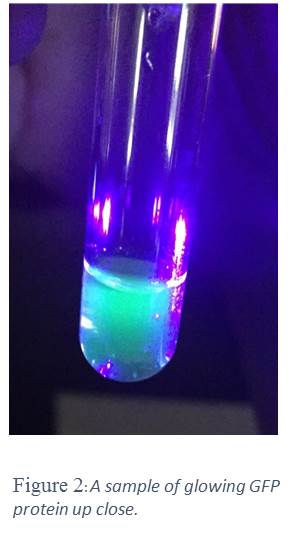Mr. Pedersen’s biotechnology classes have been hard at work on the independent research projects that they have spent the last few weeks designing. Below are some of the ideas students have been starting with, in the hopes of either entering the Cobb-Paulding regional science fair, or entering the Honors Scientific Research Class next year:
Symone Reid and Jonathan Espino have chosen a quirky but intriguing topic: the growth of organic materials in mars-like conditions. More specifically, they will attempt to grow potatoes in a simulation of Mars’s climate. Symone says that they eventually aim to “theorize ways to bioengineer a potato plant that will germinate on Mars”.
Isabella Davis and Chayton Pabich are focusing on a more down to earth topic, and are attempting to study biofuels. They will be engineering a plasmid to contain the cellobiase enzyme. For readers that are unaware, enzymes are circular pieces of bacterial DNA, which we have used frequently in this biotechnology course. It is impressive how these biotech students have been able to latch onto the concept of plasmids (from their work with pGLO plasmids) to design their own experiment.
Chayton, who is also working with many members of the two biotech classes on an environmental DNA (eDNA) project, says that the topic is so new that “you would be hard pressed to find anything prior to 2014 on the subject”. He says that the uses of eDNA are endless, and include “determining the exact ratio between species in any aquatic environment”. The PCHS Science Club soon become involved with this eDNA project, and it will provide a platform for biotech students to learn more about the phenomenon.
Ashley Brown and Lena Allen extracting DNA from cheek cells and using PCR to determine the prevalence of Human Endogenous Retroviruses (HERVs) in our biotech class’s DNA. HERVs are retroviral sequences that were introduced to the human genome billions of years ago, but have since mutated. Many HERVs have been associated with diseases and conditions such as Cancer and Schizophrenia.
Symone Reid and Jonathan Espino have chosen a quirky but intriguing topic: the growth of organic materials in mars-like conditions. More specifically, they will attempt to grow potatoes in a simulation of Mars’s climate. Symone says that they eventually aim to “theorize ways to bioengineer a potato plant that will germinate on Mars”.
Isabella Davis and Chayton Pabich are focusing on a more down to earth topic, and are attempting to study biofuels. They will be engineering a plasmid to contain the cellobiase enzyme. For readers that are unaware, enzymes are circular pieces of bacterial DNA, which we have used frequently in this biotechnology course. It is impressive how these biotech students have been able to latch onto the concept of plasmids (from their work with pGLO plasmids) to design their own experiment.
Chayton, who is also working with many members of the two biotech classes on an environmental DNA (eDNA) project, says that the topic is so new that “you would be hard pressed to find anything prior to 2014 on the subject”. He says that the uses of eDNA are endless, and include “determining the exact ratio between species in any aquatic environment”. The PCHS Science Club soon become involved with this eDNA project, and it will provide a platform for biotech students to learn more about the phenomenon.
Ashley Brown and Lena Allen extracting DNA from cheek cells and using PCR to determine the prevalence of Human Endogenous Retroviruses (HERVs) in our biotech class’s DNA. HERVs are retroviral sequences that were introduced to the human genome billions of years ago, but have since mutated. Many HERVs have been associated with diseases and conditions such as Cancer and Schizophrenia.

